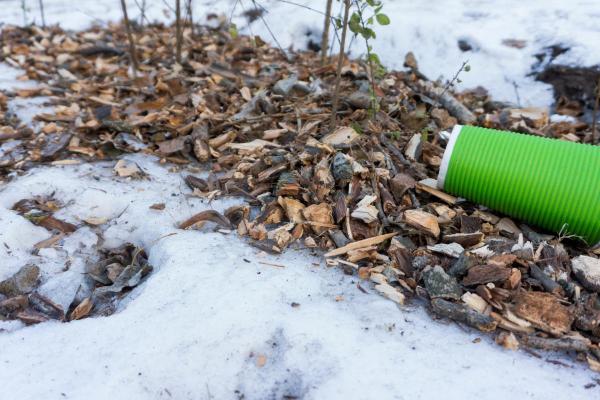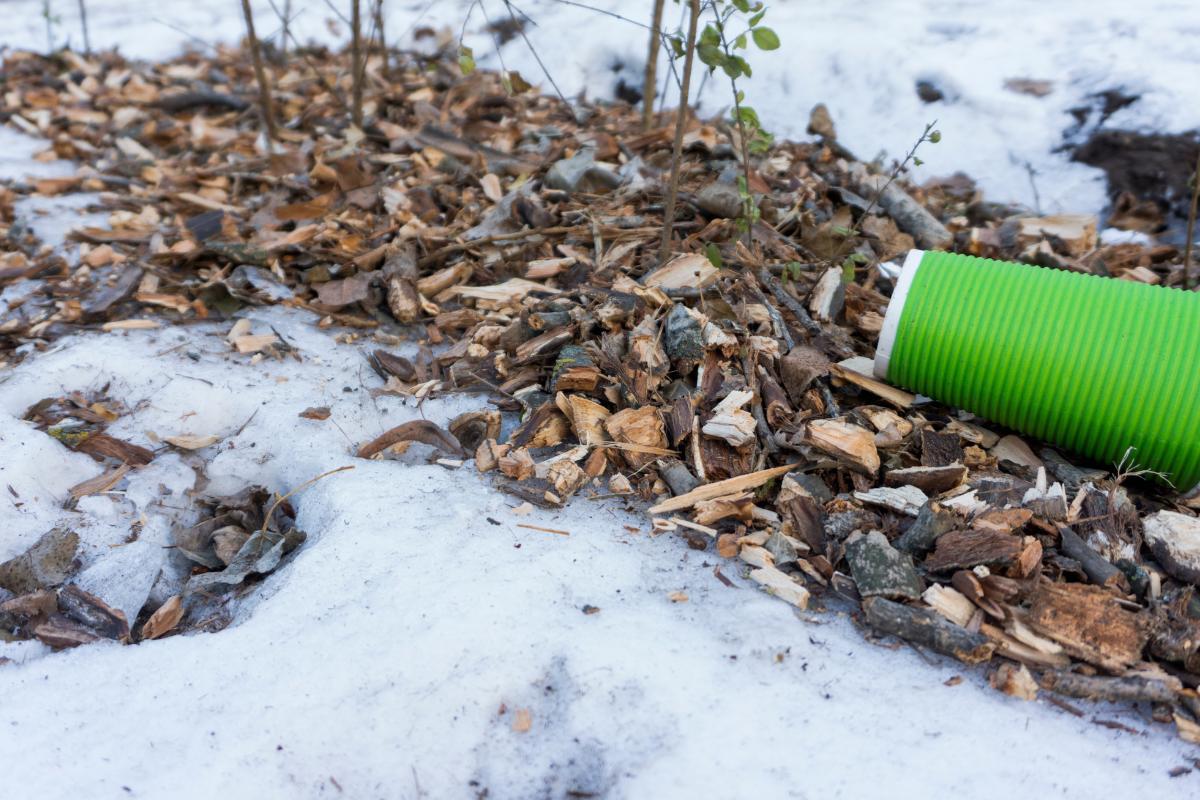Trash on Mount Everest? - Causes and Consequences


Towering over the world, Mount Everest beckons adventurers with its awe-inspiring heights. Yet, beneath the majesty lies a growing problem: climber waste pollution. Every year, hundreds of individuals attempt to conquer the peak, leaving behind a trail of discarded tents, oxygen canisters, food packaging, and human waste. This mounting garbage not only marks the breathtaking landscape but also threatens the delicate ecosystem and local communities of the region.
In the upcoming article from thedailyECO, we will delve into the reasons behind the pollution on Mount Everest, examining its environmental and community impacts. Additionally, we will explore the ongoing initiatives aimed at addressing and resolving this issue.
Is there pollution on Mount Everest?
Yes, unfortunately, there is a significant amount of pollution on Mount Everest, primarily in the form of climber waste. Every year, hundreds of people attempt to summit the world's highest peak, leaving behind a trail of discarded gear, food packaging, and human waste.
Each year, more than 600 climbers, each accompanied by at least one local guide or Sherpa, make their way to Mount Everest during a brief window of favorable weather. This influx transforms the once serene slopes into a congested pathway.
Not only that, but each climber devotes weeks to acclimating to the altitude at various camps before progressing to the summit. Over this period, an average of approximately eight kilograms (18 pounds) of trash is generated by each individual. Unfortunately, the majority of this waste is left behind on the mountain.
The harsh environment of Everest presents unique challenges. Decision-making under pressure, often within a window of good weather, can impact waste management practices. For example, discarding equipment due to extreme weather or prioritizing safety over carrying additional weight become factors to consider.
Additionally, the sheer difficulty of accessing Everest's summit poses logistical challenges for waste management. Transporting heavy loads uphill is strenuous and time-consuming, making climbers prioritize essential supplies for survival over carrying down accumulated waste. Additionally, establishing proper waste disposal facilities at higher camps is difficult due to space and weight limitations.
How much trash is on Mount Everest?
Estimating the exact amount of trash on Mount Everest is difficult due to the harsh conditions and challenging terrain. However, it is estimated that there is at least 120,000 kilograms (120 tons) of waste on Mount Everest. This includes abandoned tents, oxygen canisters, climbing gear, and human waste.
Journey through the mountain's fascinating anatomy, from its ancient bedrock to its breathtaking glaciers, in this other article.

Factors contributing to pollution on Mount Everest
Multiple factors contribute to the pollution on Mount Everest, presenting significant environmental challenges on this iconic peak. Let's delve into the key contributors in closer detail.
- Increased activity: the popularity of mountaineering has led to a rise in the number of climbers, guides, and expeditions on Everest. This translates to a proportional increase in human-generated waste, including food scraps, discarded equipment, and abandoned oxygen canisters.
- Waste management challenges: the harsh conditions and urgency faced by climbers can compromise waste management practices. Decisions about essential survival items may result in abandoning non-essential gear.
- Logistical constraints: transporting supplies to Everest's summit presents logistical hurdles. Expedition teams must prioritize weight and space, sometimes leaving behind non-essential items that contribute to the debris.
- Environmental challenges: weather conditions like windstorms and low temperatures can hinder efficient waste collection. Climbers often prioritize personal safety over waste management in demanding situations.
- Lack of facilities: the absence of proper waste disposal facilities at higher camps makes responsible waste disposal difficult, leading to the accumulation of discarded items.
- Human waste management: limited sanitation facilities contribute to the issue of human waste on Everest. In the absence of proper disposal methods, human waste can contaminate the environment.
To understand the full scope of Everest's pollution challenge, diving deeper into the types of solid waste involved is essential. Explore the different categories and their environmental impacts in our other article.
How does pollution affect Mount Everest?
The consequences of the accumulation of garbage on Mount Everest have far-reaching implications, covering environmental, social, and safety aspects. Let's break down the key points:
Environmental perspective:
Garbage on Everest adversely impacts the fragile ecosystems in the region. Slow decomposition of abandoned objects, especially non-biodegradable materials like plastics, contributes to soil and water pollution. This alteration of the natural environment can have severe consequences for local flora and fauna already facing extreme survival conditions at high altitudes.
Social impact:
Litter on Everest affects local communities dependent on mountain tourism. Persistent waste management issues can tarnish the mountain's image as a premium tourist destination. Additionally, the presence of trash directly impacts the quality of life for surrounding communities, raising concerns about health and the environment.
Safety considerations:
Trash on Everest poses additional risks to climbers. Abandoned objects, such as broken ropes or deteriorated equipment, can be hazardous for those following the same climbing paths. The accumulation of waste in critical areas, like the South Col, can obstruct routes, elevating the complexity and danger of expeditions.
What is being done to clean up Mount Everest?
The battle against pollution on Mount Everest demands proactive solutions and a collective commitment to sustainability. While the challenge is formidable, numerous efforts are underway to tackle the issue and restore the mountain's natural splendor.
- Clean-up expeditions: dedicated teams of volunteers regularly climb Everest, not to conquer the peak, but to reclaim it from the grip of waste. Organizations like Sagarmatha Pollution Control Committee and Eco Everest collect tons of abandoned equipment and discarded items, contributing significantly to reducing the mountain's burden.
- Deposit schemes: some trekking companies implement deposit schemes, where climbers pay a deposit that is refunded only upon returning with all their waste. This financial incentive encourages responsible waste disposal and fosters awareness.
- Educational campaigns: organizations like the Mount Everest Foundation and the Himalayan Trust work tirelessly to educate climbers, guides, and local communities about responsible waste management practices and the environmental consequences of pollution. These campaigns empower individuals to become stewards of the mountain and advocate for sustainable practices.
- Eco-friendly alternatives: Research and development are exploring options for biodegradable tents, reusable climbing gear, and alternative waste treatment technologies suitable for the harsh conditions of Everest. These innovations can significantly reduce the amount of non-degradable waste left on the mountain.
- Advanced logistics and infrastructure: establishing designated waste collection points at lower camps and improving waste management infrastructure at base camps can streamline waste disposal and facilitate responsible practices by climbers. Additionally, exploring alternative methods for transporting waste down the mountain could further address logistic challenges.
Ultimately, tackling the issue of pollution on Everest requires a concerted effort from all stakeholders:
- Climbers: individual responsibility is key. Embracing responsible waste management, advocating for sustainable solutions, and participating in educational initiatives are crucial steps.
- Expedition organizers: implementing strict waste management policies, providing resources and training for responsible disposal, and collaborating with cleanup efforts are essential contributions.
- Governments and environmental organizations: enacting and enforcing regulations, investing in research and development of innovative solutions, and supporting cleanup initiatives play vital roles.
By recognizing our shared responsibility and embracing sustainable practices, we can scale the challenge of pollution on Mount Everest.
Before you leave, discover how summit gear, once discarded, contributes to the growing issue of plastic pollution in our oceans. Read our article on plastic in the oceans for more insight.

If you want to read similar articles to Trash on Mount Everest? - Causes and Consequences, we recommend you visit our Ecology (other) category.
- Sagarmatha Pollution Control Committee (SPCC): https://www.spcc.org.np/
- Eco Everest: https://www.econepal.org.np/
- Mount Everest Foundation: https://www.mef.org.uk/
- Himalayan Trust: https://himalayantrust.org.np/
- Mount Everest National Park and Buffer Zone Management Committee: https://link.springer.com/chapter/10.1007/978-3-031-05660-4_22
- Department of National Parks and Wildlife Conservation (DNPWC): https://dnpwc.gov.np/
- International Union for Conservation of Nature (IUCN): https://www.iucn.org/







